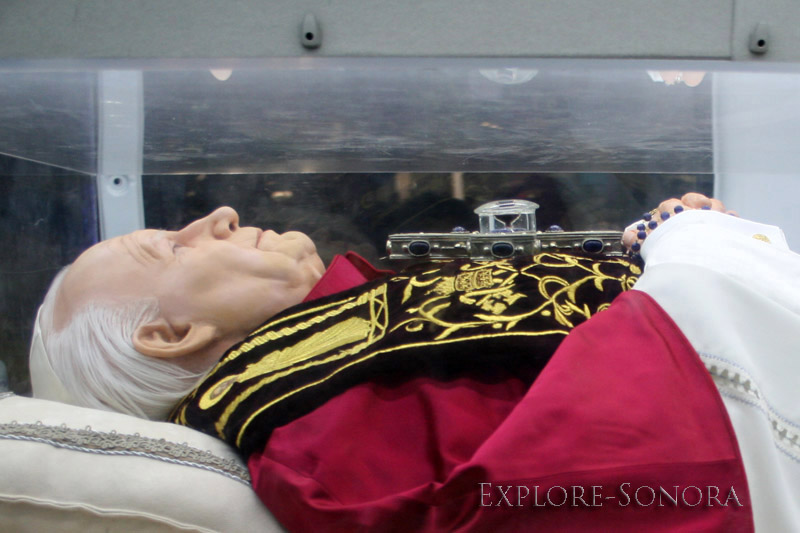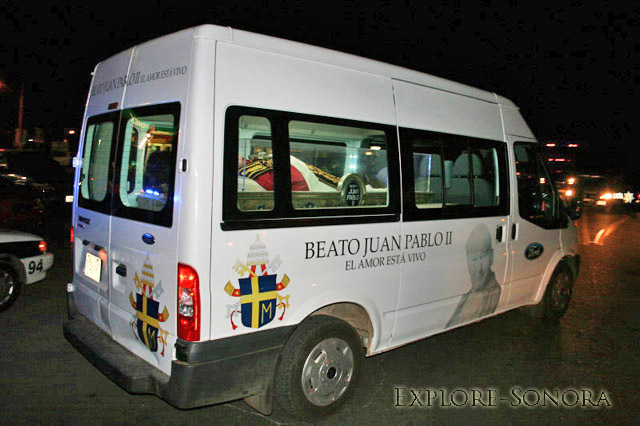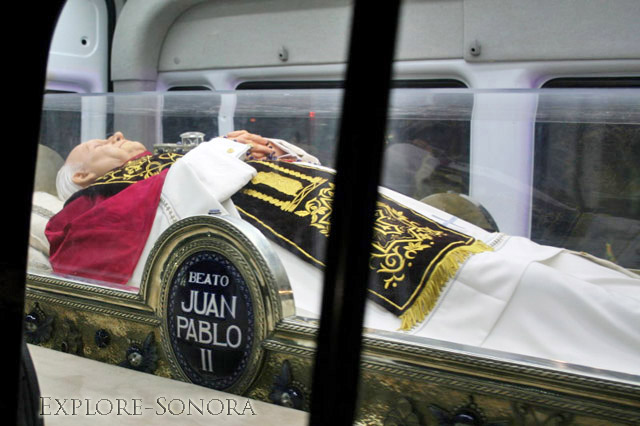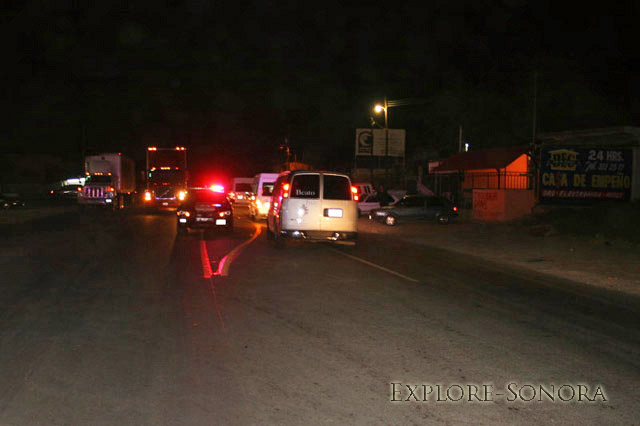Papal Relics of JPII Tour Northern Sonora
Note: This somewhat odd 2011 event that took place along Mexico highway 2 in the middle of a November night was part of the state of Sonora’s contribution to the canonization of Saint John Paul, who was revered in Mexico.
The call came out on the radio in the city of Caborca around 10:00 p.m. on a cold, dark November night – the reliquias, relics, of Pope John Paul II were going to pass through Caborca.
By the time we arrived, there was just a small crowd of about 50 people waiting by the side of highway 2 at its intersection with Calle Obregon, where the staff of a nearby Oxxo convenience store were busy making sure they had sufficient quantities of coffee and hot chocolate on hand.
We learned that the crowd had been much larger earlier, but it was just too cold and windy that evening, and the relics were more than two hours late. As a priest communicated with the entourage via a cell phone, hawkers moved among the crowd selling banners and other mementos of the event.
The crowd was waiting for a van that carried a likeness of the deceased pope lying in repose, that had been made in Rome, where the beatification tour had started. The papal figure was dressed in the vestments worn by John Paul II, making them a papal relic.
Atop the figure of the late pope sat a vial of blood, the other beatification relic, that was drawn from the pope in anticipation of the possible need for a blood transfusion before his death in April of 2005.
The relics started their journey at a beatification mass held in Rome and presided over by Pope Benedict. The casket of John Paul II was exhumed and placed in front of the altar during the service and the vial of his blood was displayed as an item of veneration.
In November of that year the papal relics, accompanied by attendants and a van used to transport the relics arrived in Hermosillo for a special mass in the Catedral de la Asunción.
At the special beatitude masses, parishioners are able to kiss relics and touch them with religious cards, rosaries, photos and other articles of faith. The Catholic church does this in order to create a connection between the people and the saint, and therefore also creating a connection with God.
There are three classes of sacred relics. First class relics are a part of the person’s body, like bones, hair or blood. Second class relics are items that the saint used or wore, such as shoes, a pen or vestments. The third class of relics are those that have touched a first-class relic, such as rosaries or prayer cards.
Like a living pope, apparently the relic could only enter a church that was a cathedral or a basilica. So after the special mass at the Catedral de la Asunción in Hermosillo the relics started their journey north to Santa Ana, and west to the Catedral de Nuestra Señora de Guadalupe in Mexicali, Baja California.
The papal relics were carried in a customized van with large windows to allow crowds to view the peaceful image of the deceased pope in its beautiful raiments and with that small vial of blood perched on top of it all. The van was part of a small convoy, with additional church vehicles and followed by a police car.
The front, sides and back of the van bore the words “Beato Juan Pablo II, El Amor Esta Vivo” (beatification of John Paul II, the Love is Alive), along with the “triregnum,” or triple crown graphic that symbolizes the papacy. The sides of the van featured an image of Pope John Paul II.
As the papal relics made their way northward to the Sonoran town of Santa Ana and then to the west on Mexico highway 2, the procession would briefly stop at every community it passed through, where adoring crowds would swarm around the van and take pictures of the sight with cell phones and cameras.
After parking for two or three minutes in Caborca, the van once again pulled on to the highway to resume its journey. The procession followed it as their flashing lights gradually faded into the darkness of a Sonoran winter night.
Note: After touring the United States and other countries, the papal relics returned to Rome in November of 2013. The vial of blood was subsequently stolen from an Italian church in January 2014, but was recovered by authorities. John Paul officially became a saint in the Catholic Church in 2014.





